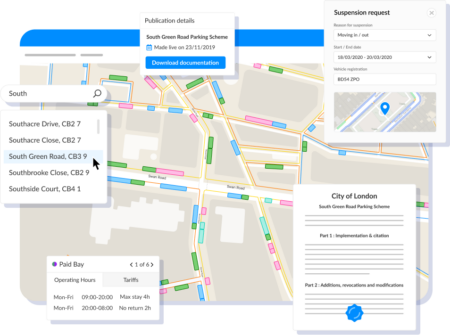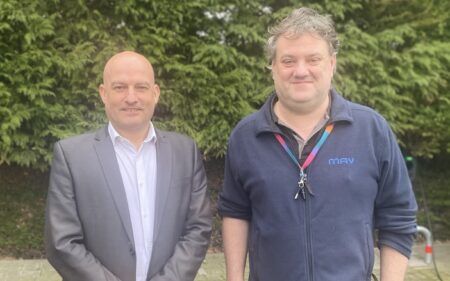Clearview Intelligence has developed and deployed a first-of-its-kind speed awareness system for the A75 in Scotland that is based on vehicle-type.
The A75 Gretna Green to Stranraer road is the main route through Scotland to the ferry port servicing Northern Ireland. Consequently, traffic volumes tend to increase when a ferry is scheduled to arrive or depart. With over 1.5 million vehicles, including over 200,000 trucks, using the road each year, Transport Scotland (TS) commissioned Clearview Intelligence to conduct speed surveys at 12 locations along the route. The surveys highlighted a recurring problem, with the 85th percentile speed being unacceptably high, most notably with trucks.
Working with the road operator Scotland TranServ, Clearview developed a first-of-its-kind system to encourage speed compliance and change driver behavior. The road has differing speed limits per vehicle classification, with cars limited to 60mph (96km/h), heavy vans to 50mph (80km/h) and trucks to 40mph (64km/h) so the system is designed to identify instances of speeding per vehicle type and provide an alert to the driver. Six locations were selected for maximum impact, and the system needed to be solar-powered to cater for rural areas where it is impossible to connect to a mains supply.
Clearview installed solar-powered vehicle detection count and classify units to record a combination of vehicle classification with identification of vehicles travelling above the speed limit. Each of the six sites features two vehicle-activated signs (VAS) facing each direction of travel. The vehicle detection units communicate with the VAS to trigger a display showing the appropriate speed limit warning according to vehicle type. This type of dynamic speed warning system serves as a highly visible and immediate reminder to drivers to manage their speeds appropriately.
“Clearview and Scotland TranServ have a strong track record of partnership working to improve road safety, so when we were looking to tackle the issue of encouraging speed compliance on the A75, we were confident that they could help us to deliver an effective and robust solution,” noted Vincent Tait, road safety manager for Scotland TranServ.
“The final design is replicable and can be deployed in a variety of locations, even in the absence of mains power in remote areas. Changing driver behavior by making speed limits clearer for different vehicle types is a less punitive approach than traditional measures, and will encourage drivers to adjust their speed accordingly.”




